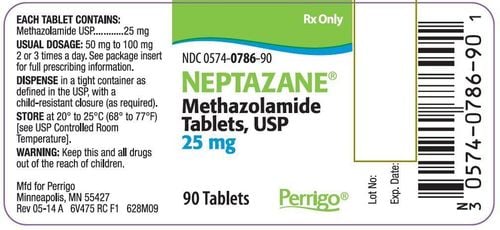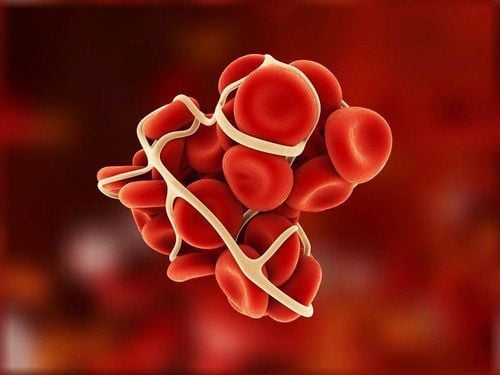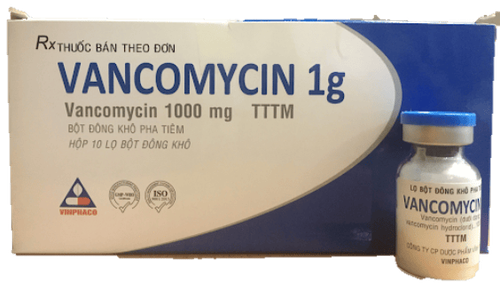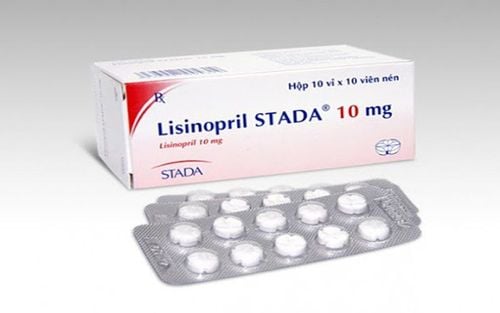This is an automatically translated article.
The article was professionally consulted with Specialist Doctor II Nguyen Quoc Viet - Department of Medical Examination & Internal Medicine - Vinmec Da Nang International General Hospital.In people with heart damage from Marfan syndrome, the connective tissue lacks strength due to its abnormal chemical makeup. This syndrome affects the bones, eyes, skin, lungs, nervous system, heart, and blood vessels.
1. What is Marfan syndrome heart damage?
Inherited connective tissue disorders in your body lead to Marfan syndrome. Connective tissue is like the glue that holds your cells together. It provides substance and support to tendons, ligaments, blood vessels, cartilage, heart valves, and many other structures. If you have Marfan syndrome, your connective tissue is not normal, so many of the body's structures are not as strong as they should be, including those in the heart. If your heart is affected, its valves may be oversized and may not work properly, which causes some of the blood to back up as the heart pumps. If the aorta (the body's main artery that carries oxygen-rich blood from the heart to the rest of the body) is affected, it can widen or split, leaking blood into your chest or abdomen. This is called a dissecting aortic aneurysm. Marfan syndrome is hereditary.2. Marfan syndrome causes and risk factors
Heart damage from Marfan syndrome is rare, occurring in about 1 in 5,000 people. Marfan syndrome is caused by a mutation in a gene called FBN1. The mutation limits the body's ability to make the proteins it needs to build connective tissue. 1 in 4 people with Marfan syndrome develop the condition for no apparent reason. People with Marfan syndrome have a 1 in 2 chance of passing the disease on to their baby .It occurs equally in men and women, who have a 50% chance of passing the gene on to their children. In about 25% of people with the syndrome, the gene changes for no apparent reason.
This condition is fairly common, affecting one in 5,000 Americans of all races and ethnic backgrounds.
3. Symptoms of heart damage caused by Marfan syndrome
Heart damage from Marfan syndrome is a "variably expressed" inherited disorder. This means that signs and symptoms can vary from person to person. They can also vary in severity and can range from mild to life-threatening. Symptoms tend to get worse as you get older.When suffering from this syndrome, the patient may experience the following symptoms:
Tall and thin. Arms, legs, fingers and toes are disproportionately long. Scoliosis of the spine. Bones sink in or protrude out. Crowded teeth. Flat feet. Heart beat. Skin stretch marks.
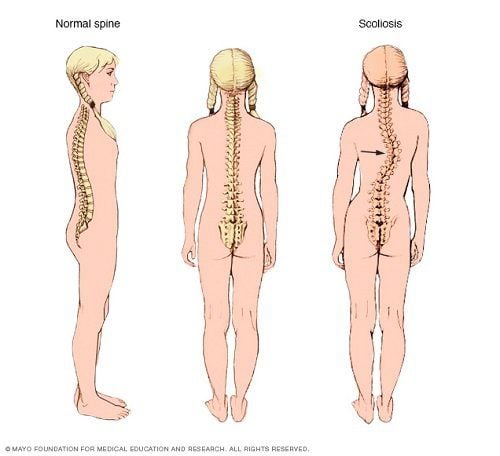
4. Complications of Marfan's Syndrome
Heart damage from Marfan syndrome affects many parts of the body and can cause a variety of complications such as:Damage to the aorta: This is one of the biggest threats of Marfan syndrome. The aorta is the artery that carries blood from the heart to the rest of the body. Marfan syndrome can rupture the inner layers of the aorta, causing dissection or bleeding in the vessel wall. You may need surgery to replace the affected part of the aorta. Mitral valve prolapse: Some people with Marfan syndrome also have a condition that causes the heart valves to constrict, which can be associated with an irregular or fast heartbeat and shortness of breath. It may require surgery. Dislocation: The lens in your eye that focuses your vision may move out of place, a condition known as presbyopia. Problems with your retina: You have a higher risk of tearing or detaching the retina, the tissue in your eye. Glaucoma or Cataracts: Marfan syndrome increases your chances of having cataracts (blurred vision) or glaucoma (high eye pressure) at an early age. Bone problems: This type of heart damage is more likely to cause scoliosis, abnormal ribs, leg pain, and back pain. Pregnancy complications: Because pregnancy increases the amount of blood in your body, a weakened aorta caused by Marfan syndrome has a higher risk of rupture or dissection during pregnancy.
5. Diagnosis of Marfan . syndrome
Heart damage from Marfan syndrome is present at birth but may not be diagnosed until adolescence or later. Everyone with Marfan syndrome has the same gene change, but not everyone has the same symptoms to the same extent. To determine if you have the disease, your doctor will:A general physical examination of your eyes, heart, blood vessels as well as your muscular and skeletal systems Ask about your symptoms Ask about your medical conditions family members who may have had this disorder To check for changes in your heart and blood vessels and detect rhythm problems, your doctor may use other tests, such as:
Chest X-ray Electrocardiogram (EKG) Echocardiogram Genetic testing If they can't see parts of the aorta on an echocardiogram, or if they suspect that you may have a dissection, they should do methods performed:
Transesophageal echocardiogram (TEE) MRI scan CT scan The scan can also examine your lower back for signs of dural ectasia, a common back problem in people with Marfan syndrome.
6. Treatment of Marfan . syndrome
To get the best treatment, you may need to see more than one doctor. Heart damage from Marfan syndrome affects many systems in your body, so treatment may involve one or more specialists.You will need a treatment plan designed for specific needs. Some people need regular follow-up visits with their doctor and during their growth years, routine cardiovascular, eye, orthopedic exams.
Problems with heart damage that may require medication or surgery.
6.1. Medication Doctors usually don't use drugs to treat Marfan syndrome. But your doctor may prescribe beta blockers, which reduce the heart rate and pressure in the arteries, and prevent or slow the enlargement of the aorta. Beta-blocker therapy is usually started when the patient is young.
Some people cannot take beta blockers because they have asthma or because of side effects, which can include drowsiness, weakness, headache, slow heart rate, swelling of the hands and feet or shortness of breath, trouble breathing. sleep. In these cases, you may be able to take a medicine called a calcium channel blocker.
6.2. Surgery Marfan syndrome surgery aims to prevent aortic dissection or rupture and treat problems affecting your heart valves, which control the flow of blood in and out of your heart and between the arteries. its chamber.
The decision to perform surgery is based on the size of the aorta, the expected normal size of the aorta, the growth rate of the aorta, age, height, sex, and family history aortic dissection. Surgery involves replacing the dilated part of the aorta with a graft, a piece of artificial material used to replace damaged or weak blood vessels.
A leaky aortic or mitral valve (the valve that controls the flow of blood between the two left chambers of the heart) can damage the left ventricle (the heart's lower chamber is the main pumping chamber) or cause heart failure. In these cases, you need surgery to replace or repair the affected valve. If it is done early, before the valve fails, the aortic or mitral valve can be repaired. If the valves are damaged, they may need to be replaced.
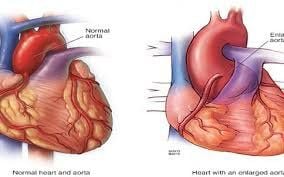
7. How does Marfan syndrome affect lifestyle?
Activity: Most people with Marfan syndrome can engage in some type of physical or recreational activity. People with aortic dilatation should avoid high-intensity team sports, contact, and isometric exercises (such as weightlifting). Ask your cardiologist what you should and shouldn't do.Pregnancy: Because Marfan syndrome is passed on to children, those who may be at risk should get genetic counseling before becoming pregnant. If the aorta is normal in size, the risk of dissection is lower but not completely gone. Those with even a little hypertrophy are at a higher risk, and the stress of pregnancy can cause faster dilation. Careful monitoring, regular blood pressure measurements, and monthly echocardiograms are recommended during pregnancy. You may be placed on bed rest if there are signs of rapid enlargement or aortic regurgitation. Your doctor will discuss the best method of delivery with you.
Prevention of endocarditis: People with Marfan syndrome that involve the heart, valves, or have had heart surgery have an increased risk of bacterial endocarditis. This is an infection of the heart valve or tissue after bacteria enter the bloodstream. To prevent this, you can take antibiotics before a dental or surgical procedure.
Emotional considerations: Marfan syndrome can make you feel angry, scared, or sad. You may need lifestyle changes and adjustments to be under careful medical monitoring for the rest of your life. You may have financial worries. You also need to consider the risk to your children in the future.
In short, this is a very dangerous syndrome, so when you notice signs related to the disease, you need to go to a medical facility for examination and diagnosis for timely treatment.
Currently, Cardiovascular Center - Vinmec International General Hospital is one of the leading centers in the country for examination, diagnosis, screening and treatment of cardiovascular diseases. Vinmec not only has the convergence of a team of experienced and reputable leading experts in the field of surgical, internal medicine, interventional cardiac catheterization but also has a system of modern equipment, on par with the most prestigious hospitals in the world. In particular, with a space designed according to 5-star hotel standards, Vinmec ensures to bring patients the most comfort, friendliness and peace of mind.
Please dial HOTLINE for more information or register for an appointment HERE. Download MyVinmec app to make appointments faster and to manage your bookings easily.





